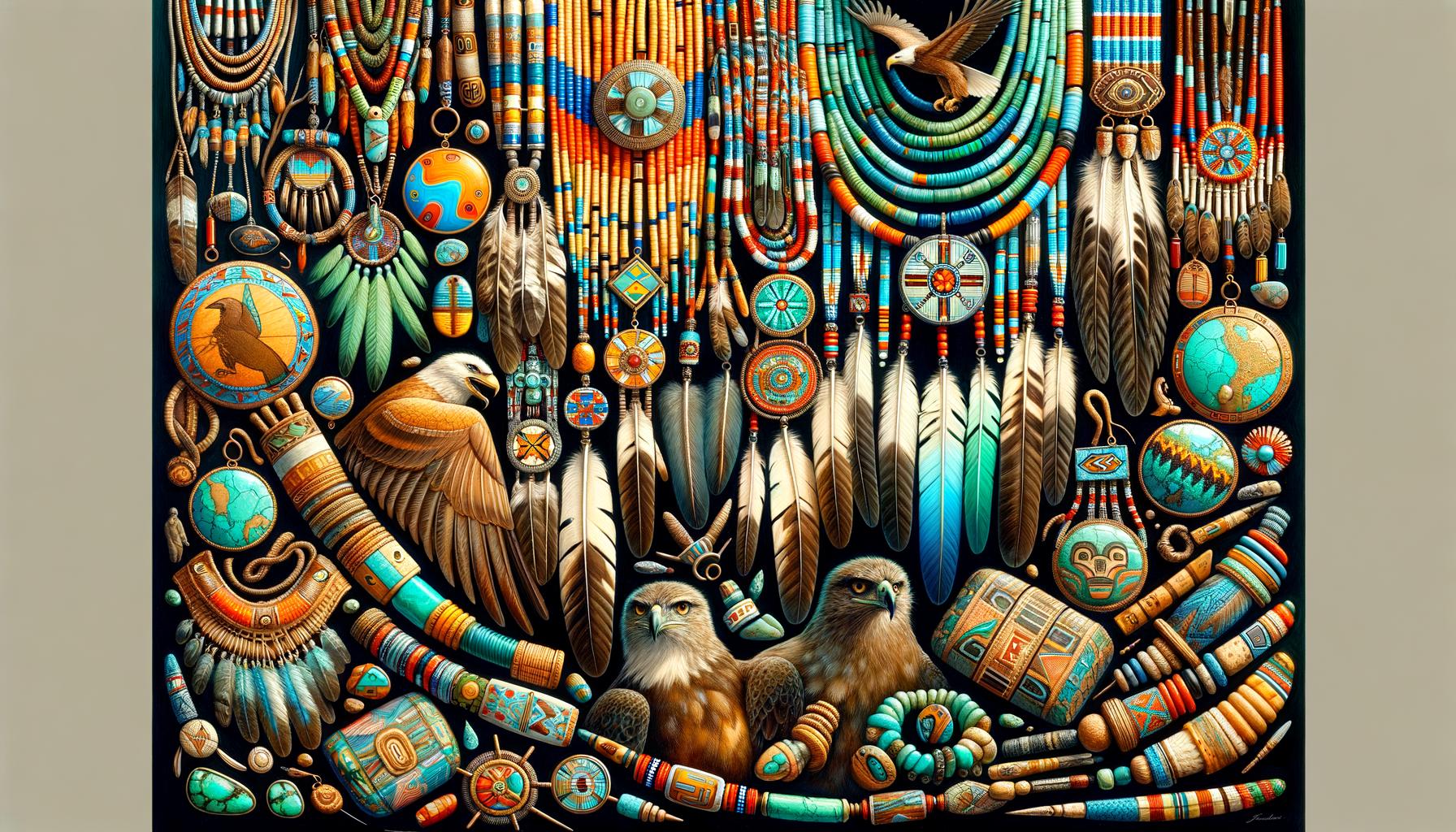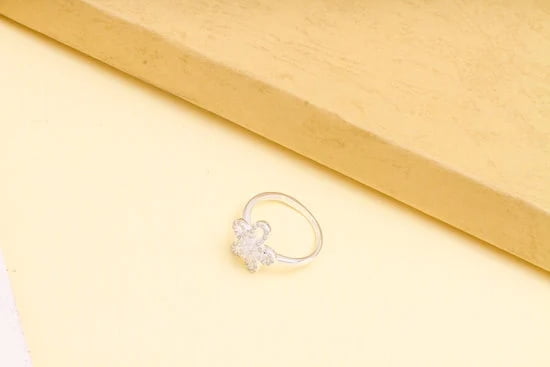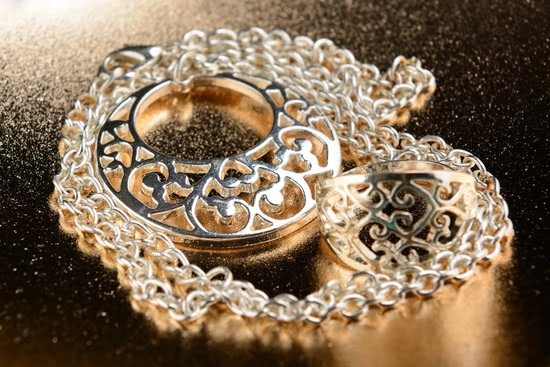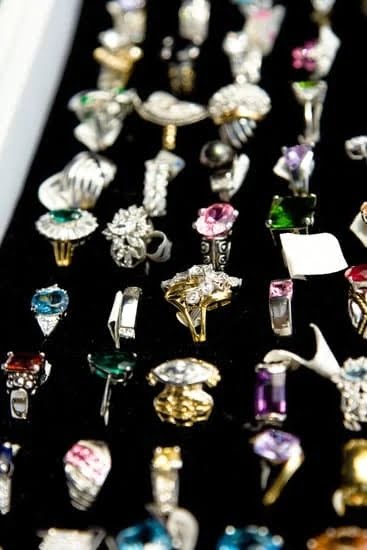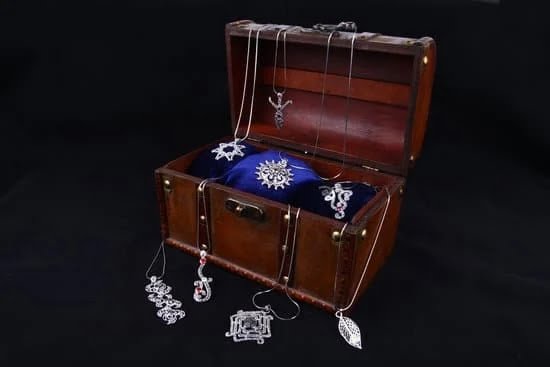Native American jewelry holds an intrinsic value beyond its physical beauty; it embodies the rich cultural heritage and complex symbolism of numerous tribes across North America. The symbolism of jewelry in Native American tribes goes far beyond mere decoration, serving as a storytelling medium that conveys deep spiritual and societal meanings. From ancient times to the present day, these intricate pieces have functioned as symbols of status, identity, and spiritual belief systems within each tribe.
Jewelry in Native American culture is not just ornamental but a profound means of personal and communal expression. It often encapsulates stories, beliefs, and values passed down through generations. By understanding the deeper symbolic meanings embedded in these adornments, one gains richer insight into the traditions and worldview of Native American peoples. The significance imbued in each piece varies widely between tribes but consistently reflects a connection to nature, spirituality, and community values.
In today’s world, understanding this symbolism remains crucial, as it fosters greater respect for diverse cultural practices and encourages the preservation of these rich traditions. The artistic techniques used by Native American artisans offer invaluable insights into their way of life and continue to influence contemporary art and fashion globally.
This exploration into the symbolism of jewelry in Native American tribes unveils a vibrant tapestry woven from historical contexts, material significance, design intricacies, ceremonial purposes, regional variations, social roles, and modern-day relevance.
Historical Context
Native American jewelry holds a deep, historical significance that spans thousands of years, weaving together intricate stories and traditions. The ancient beginnings of Native American jewelry can be traced back to the use of natural materials available within their environment.
These early artisans utilized shells, bones, stones, feathers, and plant fibers to craft pieces that held spiritual and ceremonial importance. As time evolved, these materials grew more sophisticated, incorporating turquoise and other colorful stones that were not just beautiful but deeply symbolic.
The variety of materials employed in early Native American jewelry highlights the diversity and resourcefulness of different tribes. Shells from coastal regions, copper from the Great Lakes area, and obsidian from volcanic zones created a rich tapestry of influence and trade among tribes.
As European settlers arrived in North America, they brought with them metals like silver which began to replace some traditional materials due to availability and new techniques. This led to an era where Native American artisans masterfully combined their ancestral designs with new European methods to create unique hybrids that still preserved their cultural essence.
European contact did not only change the materials used but also influenced the aesthetic development of Native American jewelry. Tools introduced by Europeans allowed for more detailed engraving and metalwork making symbols more prominent. However, despite these influences, Native American jewelry remained firmly rooted in its traditional symbolism. The symbolism of jewelry in native american tribes continued to highlight elements such as ancestry, land connection, spirituality, and social status through every bead strung or piece hammered into shape.
A few notable points include:
- The sustained use of turquoise as a material symbolizing protection and health.
- The adaptation of silversmithing techniques post-European contact.
- Continued emphasis on storytelling through design elements despite changing times.
These transitions in material use exemplify how Native American jewelry has adapted while preserving its fundamental symbology throughout history.
Symbolic Materials and Their Meanings
The significance and richness of Native American jewelry are deeply intertwined with the materials used in their creation. Turquoise, one of the most esteemed stones, holds profound spiritual meaning for many tribes, particularly the Navajo and Zuni. Often referred to as the “stone of life,” turquoise is believed to possess healing properties and protective powers.
The blue-green hue of turquoise is reminiscent of sky and water, making it a potent symbol of life, prosperity, and unity with nature. No wonder this stone remains a cherished element in Native American adornments.
Silver is another critical material that began to gain prominence post-European contact. Tribes like the Navajo harnessed their metalworking skills to create stunning silver jewelry items such as bracelets, necklaces, and rings often paired with turquoise. The symbolism of jewelry in Native American tribes through silver has been associated with strength, endurance, and reflection due to its shiny surface. Many believe that wearing silver connects them closer to their ancestors while also combating negative energies.
Feathers are yet another coveted material used extensively by various tribes not just for their aesthetic appeal but for their potent symbolism as well. In many Native American cultures, feathers are seen as messengers carrying prayers to higher realms or deities. They epitomize qualities like courage, freedom, hope, and honor. Beadwork too plays an important role across different tribes like the Ojibwa or Dakota where intricate bead patterns tell stories or depict visions experienced by artisans during spiritual rituals.
| Material | Symbolic Meaning |
|---|---|
| Turquoise | Life, Protection, Prosperity |
| Silver | Strength, Reflection, Connection to Ancestors |
| Feathers | Courage, Freedom, Hope |
| Beads | Storytelling, Spiritual Visions |
Design Patterns and Their Significance
Design patterns in Native American jewelry are as varied and deeply meaningful as the tribes themselves. Each pattern carries a specific set of symbols and messages, often derived from the natural world and spiritual beliefs. For instance, animals such as eagles, bears, and wolves frequently appear in jewelry design.
The eagle is widely revered across many tribes as a symbol of strength, vision, and power; wearing eagle-inspired pieces is believed to imbue the wearer with these attributes. Bears represent courage and physical strength, while wolves often symbolize leadership and loyalty. These animal motifs serve not just an ornamental purpose but also convey rich stories about tribal legends and values.
Geometric patterns also play a crucial role in the symbolism of jewelry in Native American tribes. Triangles, zigzags, and spirals are common elements found on necklaces, earrings, bracelets, and other adornments. Triangles can represent mountains or directional points such as North, South, East, or West-each direction carrying its own specific connotations based on the tribe’s geographical location and cosmological views.
Zigzag patterns often symbolize lightning or water waves, embodying both natural forces’ vitality and unpredictability. Spirals might signify life’s journey or cycles of nature like seasons or life stages.
Different tribes have distinct design preferences that reflect their unique cultural narratives. The Navajo people are known for their intricate silverwork coupled with turquoise stones that hold protective qualities against negativity. Hopi artisans employ overlay techniques featuring complex symbolic designs like rain clouds or kachina spirits which are integral to their spiritual practices.
Zuni jewelers excel in stone-inlay work that brings together small pieces to create mosaics depicting animals or celestial bodies. In all cases, storytelling through imagery is fundamental; every design becomes a piece of wearable art that communicates identity, history, beliefs, and aspirations of the wearer within their community context.
The utilization of these patterns underscores how deeply interwoven art is with communication in Native societies. Jewelry designs do more than simply embellish-they narrate stories passed down through generations about origin myths, encounters with the divine, historical events or important societal virtues like bravery or resilience.” Such multifaceted expressions affirm not only individual identity but also connection to tribe-specific heritage amidst broader Indigenous traditions across North America.
Purpose and Use
Ceremonial Jewelry: Sacred Symbols and Rituals
Ceremonial jewelry holds a revered place within Native American tribes, acting as powerful vessels of symbolism and tradition. Crafted from materials steeped in spiritual significance, such as turquoise and feathers, these pieces often feature intricate designs that symbolize deep connections to the earth, sky, and ancestral spirits.
For instance, turquoise is seen as a stone of protection and healing, while eagle feathers are revered for their association with divine communication and strength. During ceremonies such as powwows, weddings, or rites of passage, individuals don these sacred pieces not merely for adornment but to channel spiritual energies and convey prayers or gratitude.
These ceremonial artifacts are usually created by skilled artisans who weave not only their craftsmanship but also their cultural narratives into each piece. The importance of these items extends beyond the individual; they stand as communal treasures passed through generations, reinforcing tribal unity and continuity of beliefs. In this deep-rooted cultural context, jewelry transcends its physical form to become a catalyst for spiritual engagement and a testament to enduring traditions.
Everyday Jewelry: Identity and Daily Significance
While ceremonial jewelry is reserved for special occasions, everyday jewelry in Native American cultures serves as a daily affirmation of identity and heritage. These pieces may be simpler in design yet rich in personal meaning and historical context. Items like beaded necklaces or silver bracelets often carry motifs specific to the wearer’s tribe-symbols like bears representing courage or zigzag lines signifying water sources important for sustenance.
Everyday adornments serve multiple functions: they act as an expression of personal identity, convey one’s social status or achievements within the community, and foster a sense of pride in one’s cultural heritage. Children might receive small tokens such as beaded bands early on to instill familial values and cultural knowledge from a young age. Over time, these pieces can accumulate layers of personal history, turning them into cherished keepsakes that chronicle life events.
Significant Examples: Wedding Jewelry & Status Symbols
Among the myriad forms both ceremonial and everyday jewelry can take on; wedding jewelry stands out for its profound social implications. In many tribes, intricately made wedding necklaces or rings are exchanged between couples during marriage ceremonies. These items go beyond representing marital union; they signify the couple’s commitment to their shared cultural values and responsibilities within the tribe.
Moreover, specific types of everyday jewelry may signal an individual’s role or position within the tribal hierarchy. Chiefs might wear elaborate headdresses adorned with rare materials like abalone shell or dentalium shells to signify their authority.
Similarly, warriors could be identified by distinctive arm bands or breastplates that denote their bravery and service. Understanding the symbolism of jewelry in Native American tribes offers invaluable insights into how deeply ingrained these adornments are in conveying identity, status, familial bonds-and ultimately-cultural longevity.
Regional Variations Among Tribes
Native American jewelry is far from monolithic; the artistry and symbolism vary widely among tribes, influenced by regional resources and environmental conditions. The Navajo tribe, for instance, is renowned for its silverwork and use of turquoise.
Turquoise not only serves as a striking visual centerpiece but also holds deep spiritual significance as it is believed to promote health and protect against negativity. This belief underscores the multifaceted symbolism of jewelry in Native American tribes-where materials are not just chosen for aesthetic reasons but also for their cultural and spiritual resonance.
Moving westward, the Hopi tribe’s jewelry exemplifies a different kind of craftsmanship, often emphasizing intricate overlay techniques. They use symbols like rain clouds and eagles that connect deeply with their agricultural lifestyle and reverence for natural elements. The emphasis on geometric patterns in Hopi designs reflects their connection to the cosmos and earthly cycles, offering another example of how the symbolism of jewelry in Native American tribes varies according to cultural narratives and environmental influences.
Similarly, the Pueblo people incorporate storytelling through their beadwork, with each bead representing a piece of their heritage or an ancestral story. The Zuni artisans are famed for their meticulous stone inlay work featuring coral, jet, shell, and turquoise.
Despite neighboring regions sharing some materials due to trade and cross-tribal interaction, each tribe’s unique history shapes its symbolic language through specific design choices. Understanding these regional variations allows us to better appreciate the complexity within Native American jewelry traditions-each piece serves as an artifact that tells a rich story infused with cultural pride and identity.
The Role of Jewelry in Social Identity and Status
In Native American tribes, jewelry has long served as a vital indicator of social identity and status. The symbolism of jewelry in Native American tribes extends beyond mere adornment; it communicates intricate layers of social stratification, spiritual connection, and community affiliation.
For instance, certain pieces are bestowed upon individuals to mark significant achievements or milestones, such as rites of passage, martial accomplishments, or roles within the tribal hierarchy. These adornments often feature specific materials and designs that indicate the wearer’s position, allowing for a visual form of storytelling within the community.
Jewelry also delineates gender roles and responsibilities within tribes. Women commonly wear necklaces and earrings that signify their familial lineage or marital status, while men may don items like breastplates or amulets symbolizing their warrior status or hunting prowess.
Artisanship tends to be gender-specific as well; traditionally, men might work with metals like silver and create elaborate headdresses, while women tend to focus on beadwork and intricate weaving techniques. This division not only highlights the craftsmanship skills but also underscores societal roles as seen through the lens of cultural artifacts.
The symbolic importance of jewelry transcends historical contexts and continues to hold relevance in modern times. Today, many Native Americans wear traditional jewelry both to honor their heritage and as an assertion of cultural pride. This practice often includes contemporary adaptations where modern materials merge with age-old designs without compromising their inherent symbolism.
Festivals, powwows, and ceremonies see participants adorned in these meaningful pieces that echo ancestral practices while emphasizing present-day identity markers. The enduring legacy offers a blend of continuity and evolution in how Native communities express social distinctions through their unique artistry.
- Markers of social status: rites of passage, achievements
- Gender-specific roles: distinct types for men (breastplates) vs women (necklaces)
- Modern implications: blend of traditional designs & new materials
Contemporary Significance and Revival of Traditional Jewelry Making
Preserving Ancestral Techniques in Modern Times
In recent years, there has been a conscious effort among Native American artisans to preserve and revive traditional jewelry-making techniques. This resurgence is not merely about recreating old designs but also about keeping the cultural heritage alive.
With a renewed focus on using authentic materials and methods passed down through generations, contemporary artisans ensure that the symbolism of jewelry in Native American tribes remains integral to their work. Techniques like hand-tooling silver, intricate beadwork, and stone inlay continue to be essential skills nurtured by master craftsmen who aim to educate young members within their communities.
The Impact of Modern Materials and Methods
While honoring tradition is paramount, many modern Native American jewelers are also incorporating contemporary materials and techniques into their creations. The infusion of elements like contemporary glasswork, advanced metalworking technology, and synthetic stones allows for new forms of expression while respecting symbolic meanings.
For example, some artisans might use lab-created turquoise imbued with the same spiritual significance as natural stones, thus maintaining the deep-seated beliefs attached to these values. Even when integrating newer elements into traditional designs, respect for the original symbolism ensures continuity between past and present craftsmanship.
Cultural Pride and Identity Through Modern Creations
The revival of traditional jewelry-making practices goes beyond mere aesthetics; it plays a crucial role in reinforcing cultural pride and identity among Native American communities today. Contemporary pieces often carry forward significant patterns, motifs, and materials that have long-standing meanings linked to tribal mythology and cosmology.
Artists publicly display their work in exhibitions or online marketplaces not only to earn livelihood but also as a declaration of resilience and continuity. The practice helps educate broader audiences about the rich history embedded within each piece while contributing to a global recognition of the profound symbolism of jewelry in native american tribes.
Conclusion
The enduring legacy of Native American jewelry symbolism is a testament to the rich cultural heritage that has been passed down through countless generations. Each piece of jewelry serves as more than just an adornment; it is a tangible connection to history, spirituality, and identity. Understanding the intricacies of this symbolism helps us appreciate not only the artistry involved but also the narratives and traditions they embody.
Preserving this heritage is not merely about protecting artifacts in museums; it’s about keeping alive the techniques, stories, and meanings that give these items their profound significance. Today, many Native American artisans are laboring diligently to revive traditional jewelry-making methods while incorporating modern elements.
This fusion ensures that the symbolic essence remains intact even as new expressions emerge. Modern materials have introduced fresh avenues for creativity without compromising on the deep-rooted meanings attached to traditional designs and motifs.
By supporting Native artisans and educating ourselves and others about the symbolism of jewelry in native american tribes, we contribute to preserving this invaluable aspect of cultural heritage. In doing so, we honor the past while allowing these vibrant traditions to thrive in contemporary society. The effort put into understanding these symbols elevates our appreciation for Native American culture and reinforces the importance of sustaining its legacy for future generations.
| Jewelry Function | Significance |
|---|---|
| Traditional Techniques | Maintains historical accuracy |
| Modern Materials | Enables new creative expressions |
| Symbolic Designs | Connects individuals to their ancestry and spirituality |
Understanding and honoring Native American jewelry enables us to appreciate its role in cultural pride and identity today. These pieces are not simply relics from a distant past but dynamic elements within a living tradition that continues to evolve while holding steadfastly to its roots. By fostering knowledge and support, we ensure that these beautiful symbols will retain their place within both individual lives and collective memory.
Additional Resources and Further Reading
The everlasting legacy of Native American jewelry symbolism is profoundly woven into the cultural fabric of indigenous communities. The intricate designs and materials used serve not only as aesthetic adornments but also as significant conveyors of identity, spirituality, and history. This article has traced the journey of Native American jewelry from its ancient origins to contemporary practices, highlighting how materials like turquoise, silver, feathers, and beads each carry unique symbolic meanings that connect individuals to their environment and spiritual beliefs.
Preserving the knowledge and appreciation of Native American jewelry is critical in honoring these rich traditions. As society becomes more aware of cultural heritage and historical significance, it’s vital to support the artisans who strive to keep these traditions alive.
By understanding the symbolism of jewelry in Native American tribes, we gain deeper insight into the values and stories that have been passed down through generations. Moreover, embracing this heritage fosters greater respect for the diversity and resilience of indigenous cultures.
In today’s world, where cultural pride and identity face constant challenges, the revival and continuation of traditional jewelry-making techniques are powerful acts of resistance and assertion. They echo a timeless narrative of belonging and reverence for ancestral wisdom.
It is our responsibility to ensure that these practices endure by supporting Native artisans through patronage, education, and advocacy. Through such efforts, we contribute not only to preserving artistic excellence but also to maintaining a living connection with a profound historical legacy that continues to inspire and educate us all.
Frequently Asked Questions
Why Do Tribes Wear Jewelry?
Tribes wear jewelry for multiple reasons that extend beyond mere decoration. Often, jewelry holds significant cultural and spiritual symbolism.
It can denote status within the community, serve ceremonial purposes, or be used as a form of protection or amulet. Additionally, the craftsmanship involved in making such jewelry often carries stories and traditions passed down through generations, helping to preserve the tribe’s heritage.
What Tribe Are Known for Their Jewelry?
The Maasai tribe of Kenya and Tanzania is renowned for their intricate beadwork and jewelry. Their brightly colored necklaces, bracelets, and earrings are not just visually stunning but also serve various social functions.
These pieces often indicate the age group or social status of the wearer and play a vital role in ceremonies such as rites of passage or weddings. The Maasai’s use of vibrant colors and specific patterns makes their jewelry easily identifiable and deeply meaningful within their culture.
Why Is Jewelry Important to Navajo Culture?
Jewelry holds profound importance in Navajo culture due to its role in both spiritual practices and artistic expression. Navajo artisans are particularly known for their exceptional silverwork combined with turquoise stones to create striking pieces that carry deep cultural significance.
Such jewelry is often used in various ceremonies to symbolize a connection with nature and ancestral spirits. Moreover, it serves as an avenue for economic sustenance, allowing artisans to support themselves while preserving their traditional craftsmanship methods that have been passed down through generations.

Welcome to my jewelry blog! My name is Sarah and I am the owner of this blog.
I love making jewelry and sharing my creations with others.
So whether you’re someone who loves wearing jewelry yourself or simply enjoys learning about it, be sure to check out my blog for insightful posts on everything related to this exciting topic!

